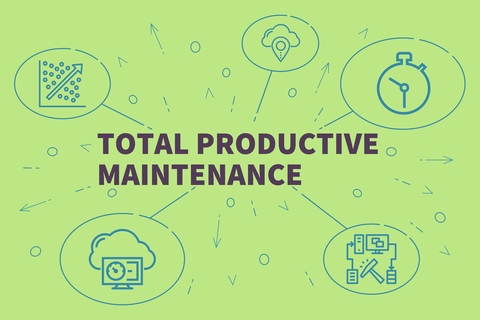What is a Total Productive Maintenance (TPM) Event?

Within the context of manufacturing Total Productive Maintenance (TPM) refers to a system of maintenance and improvement of production and quality systems through the use of machines, employees, processes and equipment which give an organization its value. A 3 – 5 day TPM event is focused on ensuring that your work process equipment is kept in ideal operational condition, while also setting up maintenance processes for it. This ensures that there is minimum downtime and very few delays in the manufacturing process. The event is carried out in the following phases:
Understanding The Current State
A TPM event starts with an examination of the production floor, equipment and the maintenance department. Operators and the area owners offer the input for assessment in the form of a systems view of an organization with regard to maintenance excellence. A progression benchmark is the utilized to decide how far lean efforts have progressed. The output gives the parameters for scope and prioritization.
Establish Ownership of TPM Through a Steering Committee
Although TPM is generally considered to be a “bottom-up” tool (it can be implemented without requiring any support from the top), a team is still required to set goals for the effort and to identify the measures that need to be taken for complete implementation and sustainability. They also help to set a “maintenance vision” for the organization.
Learn More About Total Productive Maintenance (TPM) Event
Identify Mission-Critical Equipment
One of the reasons why many total productive maintenance efforts fail is having unnecessarily large scope. This results in a scarcity of essential resources needed to get the work done. By making use of numerical scoring and having a criticality matrix, it is possible to eliminate “emotional noise” from the identification so that only data is used to determine which pieces of equipment are actually critical to operations and need to be prioritized.
Establish The Condition of Each Piece of Crucial Equipment
By examining each sub-system of the equipment such as controls, hydraulics and pneumatics, it is possible to code the equipment’s condition based on its current state. Not only does this help with scheduling of any required new equipment purchases, it also assists in the planning and prioritization of necessary rebuilds, upgrades and overhauls. Having the ability to predict and plan for the required capital expense is a big business advantage.
Assess Maintenance Skills
In this phase, any gaps in skillsets are addressed. The initial step is identification of any basic skills which may need to be enhanced as well as the process- or machine-specific expertise which has to be upgraded. It also provides an opportunity for the departmental structure to be examined to establish if the operation requires productive maintenance planners or teams.
Implementation, Assessment, Improvement
The implementation phase revolves around the eight pillars of total productive maintenance. The focus of the TPM pillars is ingraining proactive preventive maintenance techniques and tactics to improve the reliability of equipment. They are:
- Focused Improvement
- Administrative & office TPM
- Autonomous Maintenance
- Planned Maintenance
- Quality management
- Education and Training
- Early/equipment management
- Safety Health Environment
This approach comes with tangible benefits, which include:
- Creation of a roadmap for necessary productive maintenance actions. The result is that the organization will have a vehicle for course corrections, communication and enhancements.
- The maintenance team will know how to carry out the necessary actions.
- The returns are measurable.
Learn More About Upcoming Kaizen Event
Planning of the TPM event as well as the systems and measures needed to support it is essential to success. Performing follow-ups on the data as well as implementation of countermeasures should be daily requirements if the TPM effort is to be sustainable.
Conclusion
The reason why so many total productive maintenance evets are slow to show any results or become unsustainable is because they are one-off occurrences: The systems that are necessary for continued support of equipment effectiveness are not created, measures to support continuous maintenance are not put in place, or the wrong measures are utilized. The function of TPM is not to fix broken systems or equipment. It is to identify, preserve and increase manufacturing capacity by ensuring the reliability of production systems.
Please feel free to contact us to discuss the scope and deliverables of your kaizen event, so we can help you determine the duration and estimated cost.


